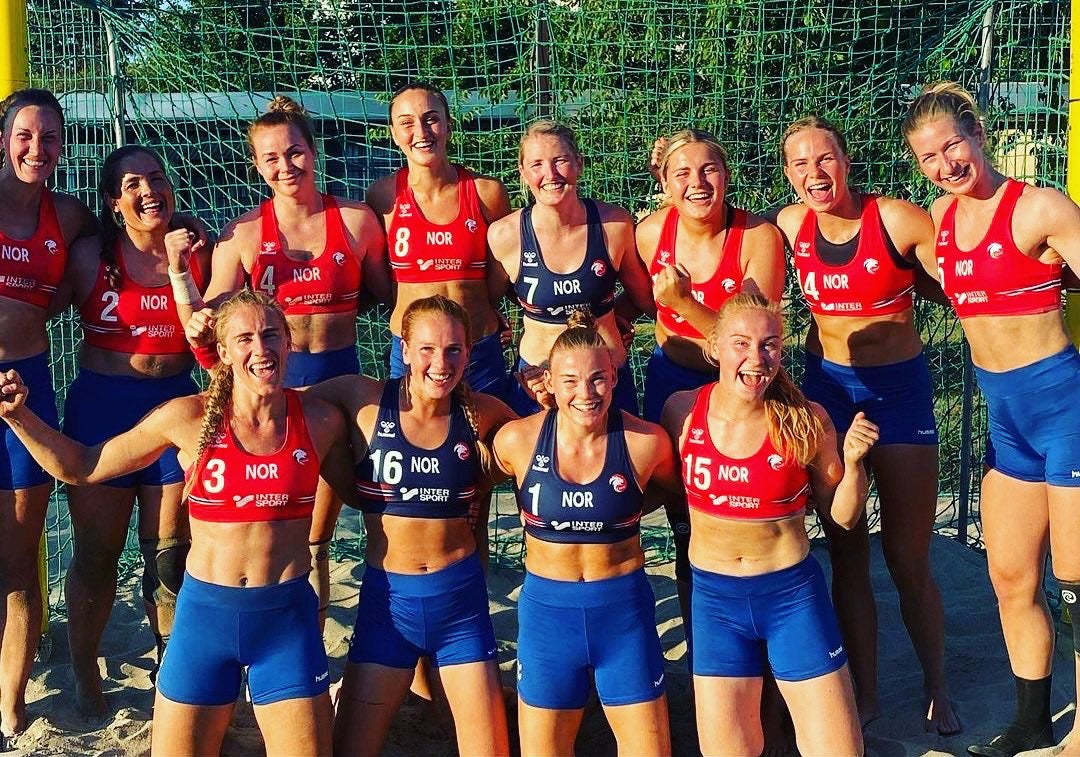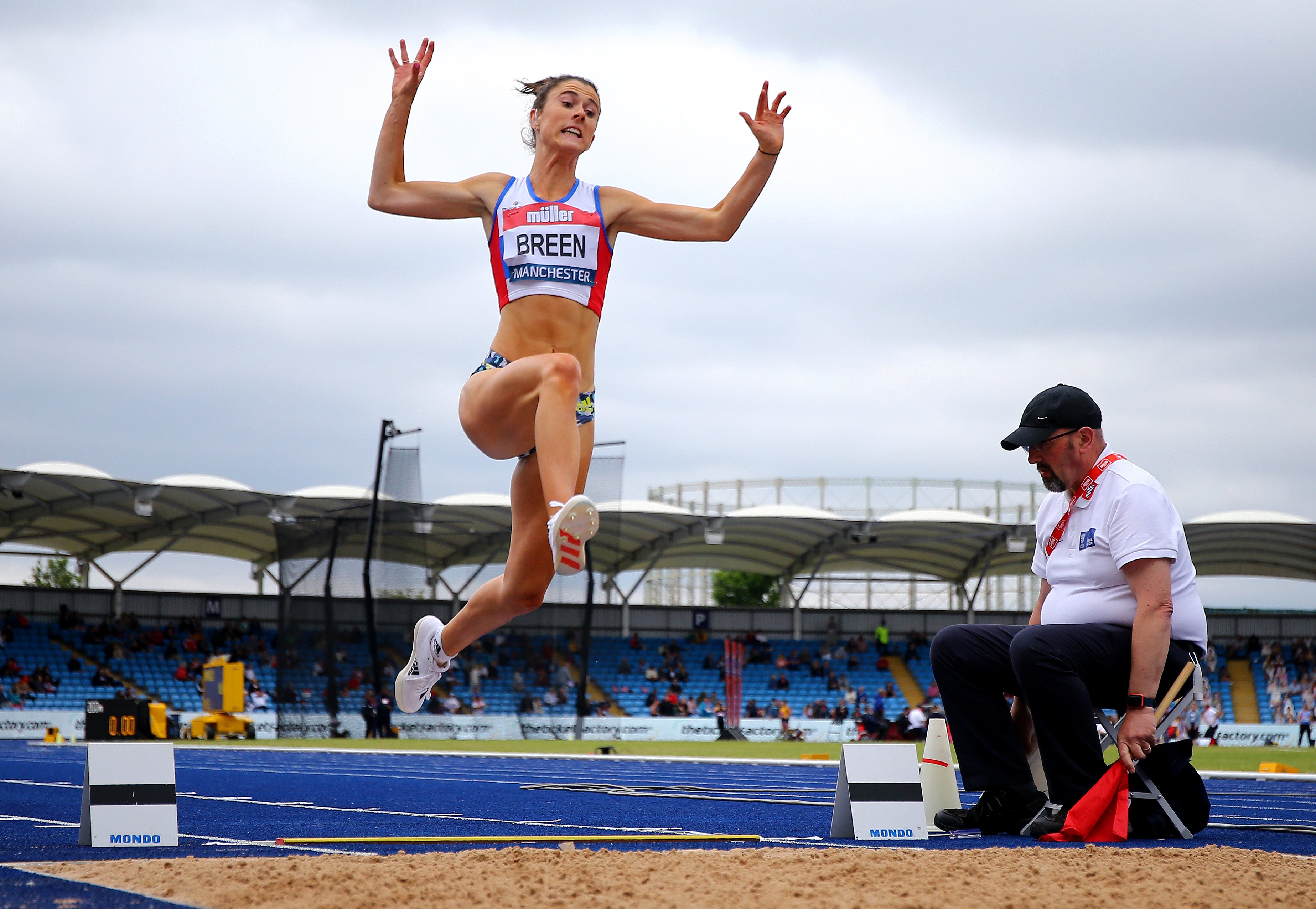The Independent's journalism is supported by our readers. When you purchase through links on our site, we may earn commission.
Why have athletes’ shorts been attracting controversy ahead of the Olympics?
British Paralympian and Norway’s women’s handball team have both found themselves at the centre of rows over their uniforms in the run up to the Tokyo Games
Your support helps us to tell the story
From reproductive rights to climate change to Big Tech, The Independent is on the ground when the story is developing. Whether it's investigating the financials of Elon Musk's pro-Trump PAC or producing our latest documentary, 'The A Word', which shines a light on the American women fighting for reproductive rights, we know how important it is to parse out the facts from the messaging.
At such a critical moment in US history, we need reporters on the ground. Your donation allows us to keep sending journalists to speak to both sides of the story.
The Independent is trusted by Americans across the entire political spectrum. And unlike many other quality news outlets, we choose not to lock Americans out of our reporting and analysis with paywalls. We believe quality journalism should be available to everyone, paid for by those who can afford it.
Your support makes all the difference.What sparked this?
Before the 2020 Tokyo Olympic Games opening ceremony has even been held - the tournament having been delayed for a year because of the coronavirus pandemic - controversy has already erupted over the kits athletes wear to take part in elite sporting competitions.
The commotion began when two-time British Paralympian world champion Olivia Breen took to Twitter to report her dismay that a female official had told her the briefs she was wearing as she took part in the English Championships in Bedford on Sunday were “too short and inappropriate”.
Breen, a sprinter and long jump specialist who suffers from cerebral palsy and will compete in the Tokyo Paralympic Games next month, said she was “disappointed” and left “speechless” by the incident, explaining that she had worn the same attire for nine years without an issue and questioning whether a male athlete would have been subjected to the same criticism.
She has subsequently said that she plans to file an official complaint and that England Athletics has already reached out to her.
“We want to be as light as possible when we’re competing, not having to feel heavy, and to feel comfortable. We should just wear what we’re entitled to wear,” she told BBC Radio 4’s Woman’s Hour this week.
The furore was swiftly followed by a separate episode in which the Norwegian women’s handball team were fined £1,295 - or £130 per player - by the European Handball Federation (EHF) for wearing shorts instead of bikini bottoms at the European Beach Handball Championships in Bulgaria, which the governing body considers to be “improper clothing”.
“In the bronze medal game against Spain on Sunday the team of Norway played with shorts that are not according to the Athlete Uniform Regulations defined in the IHF Beach Handball Rules of the Game,” the EHF said in a statement.
The Norwegian Handball Federation (NHF) has agreed to pay the fine and says it is “very proud” of its team and stands by them.
“They raised their voice and told us that enough is enough,” the NHF said in a statement. “We will continue to fight to change the international regulations for attire, so that players can play in the clothing they are comfortable with.”
What are the rules on clothing at the Olympics?
While both of those controversies occurred a long way from Tokyo, they could have consequences for the Games.
Most of the publicly available information on clothing rules specific to the Olympics concerns its strict guidelines regarding the amount of space apportioned to sponsors’ messaging on competitors jerseys, shorts and socks, even micromanaging the placing of a manufacturer’s logo on zips.
But there are myriad rules for those taking part to follow - largely derived from the individual sports’ governing bodies - which vary enormously depending on the nature of the activities in question, with some regulations insisted upon as safety precautions and others having more to do with tradition.
BMX riders making their debut at this year’s games must have their shirts tucked in at all times, for instance, to avoid loose fabric becoming ensnared in the gears of their bikes, while male figure skaters must wear trousers and women skirts and both avoid “excess nudity” in choosing costumes in keeping with the decorum of their discipline.
Among the more eccentric rules expected to be obeyed at the Olympics include the odd requirement that boxers be clean shaven or have limited facial hair, that gymnasts shun bright nail polish and V-neck leotards and that cyclists do not wear long socks.
Leaning in the other direction towards excessive leniency, track and field competitors are not actually bound to wear shoes if they prefer not to.
On the specific question of bikini bottoms in handball, the EHF’s guidelines state that: “Women should wear a bikini where the top should be a tight-fitting sports bra with deep openings at the arms. The bottom must not be more than ten centimetres on the sides.”

While this week’s incident has inevitably (and rightly) raised questions about sexism in sport, the EHF’s rules are actually equally strict for male players, who are told that they must wear “tight-fitting tank tops” and shorts that are “not too baggy” and “10 centimetres above the kneecap.”
A clue as to why this might be the case is given by the Federation Internationale de Volleyball in its own guidelines on uniforms, which state that: “Beach volleyball athletes compete in a beach and open air environment and are required to project a healthy image to audience, media, partners, etc.
“Sun, sand and sea (whenever applicable) are critical elements to take into consideration when it comes to athletes’ uniforms.”
So in addition to honing and demonstrating expert technique and trying to win, participants in some sports are also expected to “project a healthy image” for the benefit of spectators and corporate patrons, presumably to add glamour to the latter’s advertising.
In a statement commenting on this week’s handball furore, the sport’s organisers tellingly referred to it as an “attractive” game whose ambitions should be encouraged.
If that all sounds a little out of the ark, it’s hard to disagree with Kare Geir Lio, head of NHF, who agreed with Olivia Breen when she told the AFP this week that attire for the players “should be a free choice within a standardised framework. The most important thing is to have equipment that athletes are comfortable with.”

Norway’s coach, Eskil Berg Andreassen, meanwhile argued that such clothing requirements could discourage future participants from taking up the sport, pointedly alluding to women from Muslim-majority nations.
Why are we asking this now?
Tokyo 2020 has enough problems without being drawn into rows over athletes’ shorts as it is.
With a state of emergency declared for the Japanese capital amid rising Covid-19 cases and participants already beginning to test positive for the respiratory disease inside the Olympic Village, questions remain over whether the event should still be going ahead.
Toshiro Muto, the head of the organising committee, admitted as recently as Tuesday that the sporting spectacular could still be cancelled at the last minute in response to the pandemic if the situation worsens.
“We can’t predict what will happen with the number of coronavirus cases. So we will continue discussions if there is a spike in cases,” he said.
“We have agreed that based on the coronavirus situation, we will convene five-party talks again. At this point, the coronavirus cases may rise or fall, so we will think about what we should do when the situation arises.”
Japanese auto giant Toyota announced it was pulling all advertising associated with the competition on Monday, as the company’s chief communications officer Jun Nagata commented: “There are many issues with these Games that are proving difficult to be understood.”
Meanwhile, just 22 per cent of the Japanese public approve of the decision to press ahead, according to an Ispos Mori poll, with anger over the event’s spiralling cost and potential threat to the public health with only 29.3 per cent of people vaccinated prompting 200 protestors to gather outside of Shinjuku station in central Tokyo on Sunday to brandish signs reading: “No Olympics.”
“This is ignoring human rights and our right to life,” protester Karoi Todo told the AP.
“Infections are increasing. To do the Olympics is unforgivable.”




Join our commenting forum
Join thought-provoking conversations, follow other Independent readers and see their replies
Comments